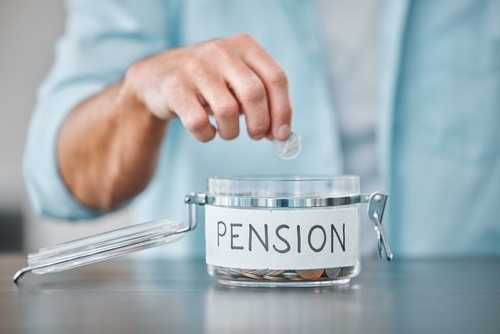Pension payments tax relief explained
When you’re saving for retirement, it’s important to get the most out of your money, and pension tax relief can help you do just that. With pension payment tax relief, some of the money you would have paid to the government from your net pay in National Insurance contributions goes into your pension instead. On this page, you’ll find out everything you need to know about pension payments tax relief, and how to claim it.
Eligibility: Anyone under the age of 75 living in the UK who pays into a pension is eligible to claim pension tax relief.
Lifetime allowance: Find out about changes to this charge and how it may affect you
Understanding tax relief: maximise your pension contributions
The information provided here is for informational and educational purposes only and does not constitute financial advice. Please consult with a licensed financial adviser or professional before making any financial decisions. Your financial situation is unique, and the information provided may not be suitable for your specific circumstances. We are not liable for any financial decisions or actions you take based on this information.
What is pension tax relief?
If you’re earning pension tax relief, it means that some of the money you would have paid in income tax goes into your pension instead of being paid to the government. The amount is based on your income tax bracket, meaning that if you’re a higher rate tax payer, you can claim 40% in pension tax relief.
When you save money into a pension, the government provides bonuses as a way of rewarding you for saving for your retirement. As you put money into your pension, the money you were supposed to pay as tax on your earnings goes to your pension instead.
How does pension tax relief work?
In the UK, pension tax relief is based on your contributions at the highest rate of income tax that you pay. This means that the pension tax relief you’ll receive will depend on the income tax band you’re in, as follows:
- Basic rate taxpayers will receive 20% pension tax relief
- Higher rate taxpayers will receive 40% pension tax relief
- Additional rate taxpayers will receive 45% pension tax relief
Please note that different income tax bands apply to taxpayers in Scotland. As in England, the amount of pension tax relief you’re entitled to depends on which tax band you’re in:
- Starter rate taxpayers receive 20% pension tax relief (but pay income tax at 19%)
- Basic rate taxpayers receive 20% pension tax relief
- Intermediate rate receive 21% pension tax relief
- Higher rate receive 41% pension tax relief
- Top rate taxpayers receive 46% pension tax relief.
For example, if, as a basic rate taxpayer, you want to pay £100 a month into your pension, you would actually only need to contribute £80, because the 20% tax relief on your pension means the government pays the remaining £20.
Are pension contributions taxable?
Your private pension contributions are tax-free up to certain limits. You usually pay tax if savings in your pension pots go above:
- 100% of your earnings in a year
- £60,000 a year
You may also pay tax on contributions if your pension provider:
- isn't registered with HRMC for tax relief
- doesn't invest your pension pot according to HMRC rules
Do pension contributions reduce your taxable income?
Yes, pension contributions can reduce your taxable income if you use 'net pay' tax relief. This is because your gross pension contribution is deducted from your earnings before you pay tax. Therefore, tax relief is given there and then by reducing your taxable earnings.
Am I eligible for pension tax relief?
Anyone under the age of 75 living in the UK who pays into a pension is eligible to claim pension tax relief. This includes non-taxpayers who aren’t in employment, for example, full-time parents and low-income earners.
You can currently save 100% of your income into a pension to earn tax relief, provided you do not exceed the £60,000 annual allowance (more on this later). However, if you’re a low-earner or you don’t have an income, the maximum amount you can contribute and still receive tax relief is £3,600. This includes the government contribution, so the net amount that you can actually pay in to receive tax relief on pension contributions is restricted to £2,880.
You’ll also be eligible for pension tax relief if someone else pays into your pension. You won’t be eligible if your pension scheme automatically claims tax relief on your behalf. You can find out if you’re eligible for pension tax relief by contacting your pension provider.
How do I claim tax relief on my pension contributions?
How you go about claiming tax relief depends on the type of pension you’re saving into. You can find the specific details by looking at your individual scheme, as sometimes you may need to do some of the legwork. The two main ways of claiming pension tax relief are as follows:
- Get pension tax relief from your net pay. This type of pension scheme deducts contributions directly from your salary before you pay income tax. Your pension provider will then automatically claim the tax relief based on your highest rate of income tax on your behalf.
- What’s called pension relief ‘at source’ applies to all personal pensions and some workplace pensions. If you’re paying your pension through your employer, your employer will take 80% of your contributions from your salary. They will then send a request to HMRC, who will pay an additional 20% tax relief into your pension.
Higher tax-rate payers need to complete a self-assessment tax return to claim tax relief. Remember that you’ll need to submit your tax return before its deadline to avoid any penalties.
How much can I pay into a pension and still get tax relief?
The government places a limit on the amount of pension contributions you can make and still earn tax relief each year. This limit is called the pensions annual allowance. For the tax year 2025/26 (6th April to 5th April), this allowance is £60,000. Any personal pension contributions you make over this limit will be subject to income tax at the highest rate you pay. If you use all of your annual allowance in a particular tax year, you may be eligible to carry your unused annual allowance forward from the three previous tax years.
Visit our article What is the maximum pension? for more information on the current pension limits.
How much tax relief can I get on my pension contributions as a higher rate tax payer?
If you are a high earner with an adjusted income of over £240,000, the annual allowance is gradually reduced. This is known as the tapered annual allowance. You can read more about this on the gov.uk website
The Lifetime Allowance (LTA) (which limited your pension to a certain amount during your lifetime) was abolished on 6 April 2024. As a result of the abolition of the lifetime allowance, the maximum amount you can usually take as tax-free cash will be frozen at £268,275, which is a quarter of the previous lifetime allowance.What was the lifetime allowance charge?
Up until 5 April 2023, if the total value of your pension benefits taken to date exceeded the lifetime allowance when a check was done, there used to be a lifetime allowance tax charge to pay on the excess, plus Income Tax on any additional income you received. This was called the lifetime allowance charge.
The way the charge applied, depended on whether you chose to take your excess as income or as a lump sum. If you chose to take an income, there was an immediate 25% tax charge, on top of any income tax you were required to pay on the income. If you took the excess as a lump sum, this was taxed at 55%.
Grow your savings further
It’s important to start saving for retirement as early as possible, and it might be worth considering different types of savings accounts as well as paying into a pension. If you want to quickly and easily open savings accounts from a range of banks, register for a free Raisin UK Account and apply for savings accounts online today. There’s no need to fill out a new application each time you apply, and your money is deposit protected from the moment it arrives in your Transaction Account through to when it automatically transfers to and from a partner bank.
Save smarter with the Raisin UK newsletter!
What’s in it for me?
- Receive exclusive updates on market-leading rates
- Ensure you never miss a bonus offer
- Keep your finger on the pulse with the latest financial news

